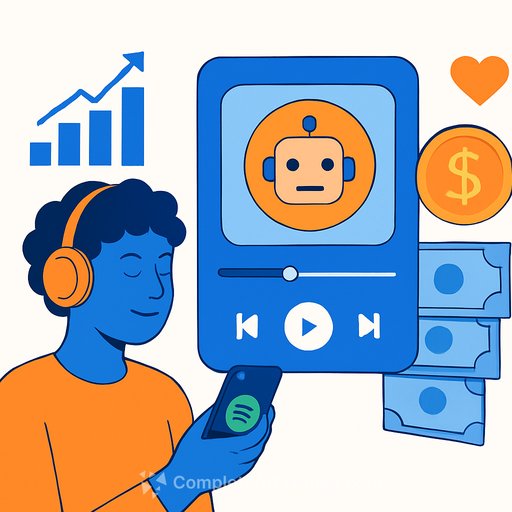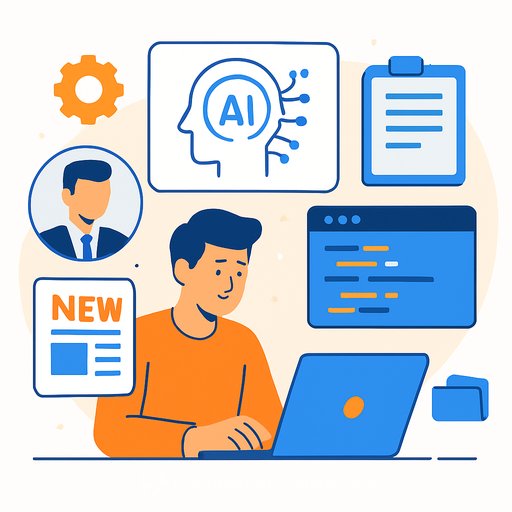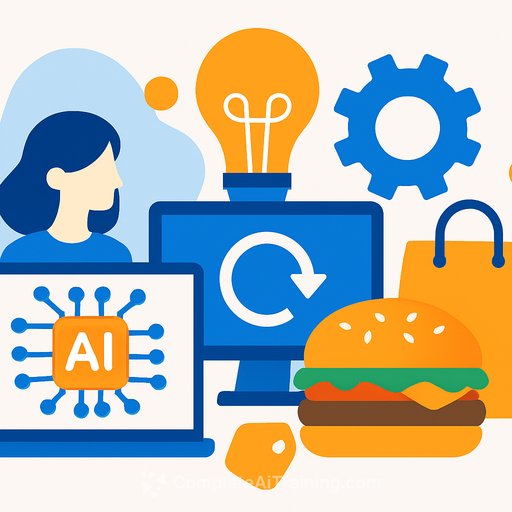Spotify's AI Music Plans: 3 Product Signals You Shouldn't Miss
Spotify has announced it's building "responsible" AI music products with all three majors, Believe, and indie rep Merlin. The company is investing in a new generative AI research lab and product team, and says more rightsholders will be onboarded over time.
This follows a tougher stance on AI spam and policy updates that led to 75 million low-quality tracks being removed. Meanwhile, Deezer reports that fully AI-generated tracks now make up 28% of daily deliveries - over 30,000 per day. That's the supply-side pressure your roadmap has to account for.
Here are three product signals in Spotify's announcement that point to where the business is headed - and how you can apply the same thinking.
1) "Wholly new revenue streams" means new SKUs, not just better royalties
Spotify didn't just promise fair compensation. It promised "wholly new revenue streams" for rightsholders, artists, and songwriters. That phrasing suggests new product SKUs and pricing constructs beyond traditional per-stream payouts.
There's precedent in the app already. Audiobooks introduced a hybrid model: monthly included hours for Premium users plus upsells via a recurring add-on and one-off "top-ups." That mix of base entitlement + paid expansion is tailor-made for AI features that can be gated, metered, or sold as consumables.
- Potential AI SKUs: licensed voice models, personalized remixes, stem packs, creator toolkits, fan-requested alternate versions, "message from the artist" generators with guardrails.
- Monetization models: add-on tiers (e.g., "Music Pro"), per-use credits, subscription bundles, marketplace take rates, revenue shares on fan co-creations.
- Controls that matter: visible attribution, usage logs, training consent, rev-split configuration at the track and contributor level.
- Risks to manage: catalog cannibalization, accounting complexity, rights conflicts across regions, and user trust if attribution isn't crystal clear.
If you're testing the waters, start with a paid beta for a narrow set of use cases and cap usage via credits. Tie success metrics to ARPU lift, attach rate, paid conversion, and the share of plays from AI-enabled experiences vs. baseline catalog.
Spotify's audiobooks model is a useful proxy for how add-ons and top-ups can coexist with core subscriptions.
2) "Artist-fan connection" hints at interactive features built for superfans
Spotify emphasized that AI tools will "give artists new ways to be creative and connect with fans." That screams interactive. Think features that create participation, not just playback.
- High-signal ideas: artist-approved AI messages, prompt-based song postcards, dynamic alternate cuts, remix challenges using licensed stems, and Q&A experiences trained on public interviews and lyrics (with strict consent boundaries).
- For artists: a control center to opt into features, set pricing, define prompts, approve outputs, and split revenue automatically with collaborators.
- For superfans: status badges, early access windows, limited "digital drops," and event-based moments (e.g., live studio sessions with AI-assisted co-creation).
- Metrics to watch: conversion to higher-priced tiers, LTV expansion, churn deltas for superfans, engagement per release window, and UGC-to-official track uplift.
There's a clear market for this. Superfan monetization has been flagged by analysts as a major growth vector, and platforms in China are already seeing traction with premium tiers priced well above standard plans. The takeaway: design for depth, not just reach.
3) Instant label endorsements suggest licensing frameworks are already in motion
All three majors publicly supported Spotify's approach on day one, emphasizing direct licensing before launch. Executives from Sony Music Group, Universal Music Group, and Warner Music Group all underscored the need for new AI licensing deals that protect and compensate rightsholders.
Spotify also said products will roll out via upfront agreements, with rightsholders choosing if and how to participate. That language implies the commercial rails - consent, attribution, compensation, and recourse - are being built into the product fabric, not bolted on later.
- Product requirements: explicit opt-in by work/artist, provenance tracking, watermarking where possible, and transparent crediting for every AI-assisted contribution.
- Compliance by design: model/dataset registries, territory-aware rights checks, automated rev-split accounting, and audit-ready usage logs.
- Launch playbook: closed roster pilots with each label, feature flags by territory, clear risk tiers (voice cloning vs. stylistic tools), and kill switches for misuse.
What product teams can build next quarter
- Prototype two paid AI SKUs: a creator-facing stem tool for artists and a fan-facing "alternate version" generator with strict approval gates.
- Bundle them into a higher-priced add-on with credits. Test price elasticity and top-up behavior.
- Ship a rights dashboard: per-track opt-in, visible contributors, automated splits, and exportable audit logs.
- Instrument for ARPU, attach rate, consent rates by catalog tier, artist NPS, and complaint volume per million outputs.
- Stand up trust and safety rules: blocked prompts, watermarking signals, identity verification for voice models, and fast takedown pathways.
Reality check for PMs
Supply is exploding, policies are tightening, and licensing is moving upfront. The winning products will feel simple to fans, powerful to artists, and safe to rightsholders - while printing new revenue lines without eroding the core business.
If you're building in this space and need to sharpen AI product skills by role, explore curated learning paths for product teams here: Complete AI Training - Courses by Job.
Your membership also unlocks:






